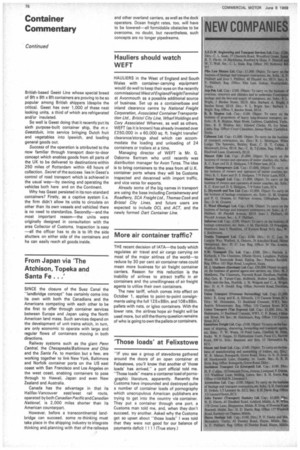From Japan via 'The Atchison, Topeka and Santa Fe. .
Page 78

If you've noticed an error in this article please click here to report it so we can fix it.
SINCE the closure of the Suez Canal the "landbridge concept" has certainly come into its own with both the Canadians and the Americans competing with each other to be the first to offer through container services between Europe and Japan using the North American land mass. Such services depend on the development of unit trains which, in turn, are only economic to operate with large and regular flows of containers moving in both directions.
Railway systems such as the giant Penn Central, the Chesapeake/Baltimore and Ohio and the Santa Fe, to mention but a few, are working together to link New York. Baltimore and Norfolk container ports on the US east coast with San Francisco and Los Angeles on the west coast, enabling containers to pass through to Hawaii. Japan and even New Zealand and Australia.
Canada has the advantage in that its Halifax-Vancouver east/west rail route, operated by both Canadian Pacific and Canadian National, is 2,000 miles shorter than its American counterpart.
However, before a transcontinental landbridge can succeed, some re-thinking must take place in the shipping industry to integrate thinking and planning with that of the railways and other overland carriers, as well as the dock operators. Ocean freight rates, too, will have to be lowered—all formidable obstacles to be overcome, no doubt, but nevertheless, such concepts are no longer pipedreams.


























































































































